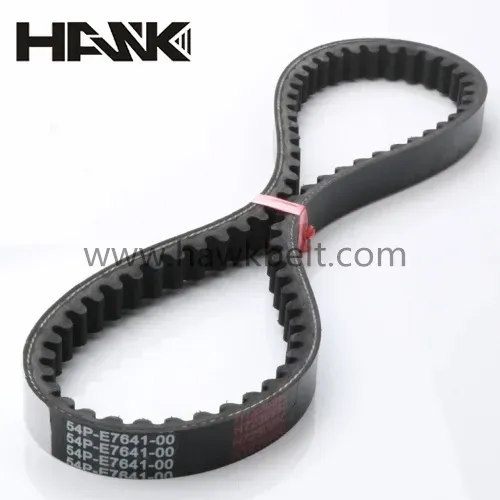- Arabic
- French
- Russian
- Spanish
- Portuguese
- Turkish
- Armenian
- English
- Albanian
- Amharic
- Azerbaijani
- Basque
- Belarusian
- Bengali
- Bosnian
- Bulgarian
- Catalan
- Cebuano
- Corsican
- Croatian
- Czech
- Danish
- Dutch
- Afrikaans
- Esperanto
- Estonian
- Finnish
- Frisian
- Galician
- Georgian
- German
- Greek
- Gujarati
- Haitian Creole
- hausa
- hawaiian
- Hebrew
- Hindi
- Miao
- Hungarian
- Icelandic
- igbo
- Indonesian
- irish
- Italian
- Japanese
- Javanese
- Kannada
- kazakh
- Khmer
- Rwandese
- Korean
- Kurdish
- Kyrgyz
- Lao
- Latin
- Latvian
- Lithuanian
- Luxembourgish
- Macedonian
- Malgashi
- Malay
- Malayalam
- Maltese
- Maori
- Marathi
- Mongolian
- Myanmar
- Nepali
- Norwegian
- Norwegian
- Occitan
- Pashto
- Persian
- Polish
- Punjabi
- Romanian
- Samoan
- Scottish Gaelic
- Serbian
- Sesotho
- Shona
- Sindhi
- Sinhala
- Slovak
- Slovenian
- Somali
- Sundanese
- Swahili
- Swedish
- Tagalog
- Tajik
- Tamil
- Tatar
- Telugu
- Thai
- Turkmen
- Ukrainian
- Urdu
- Uighur
- Uzbek
- Vietnamese
- Welsh
- Bantu
- Yiddish
- Yoruba
- Zulu
נוב . 24, 2024 23:02 Back to list
Understanding Neoprene Timing Belts and Their Applications in Various Industries
Understanding Neoprene Timing Belts Features, Benefits, and Applications
Timing belts play a crucial role in many mechanical systems, particularly in automotive and industrial applications. Among the various materials used for manufacturing timing belts, neoprene has emerged as a popular choice due to its unique properties. This article explores neoprene timing belts, their features, benefits, and applications in various industries.
What are Neoprene Timing Belts?
Timing belts are mechanical components that synchronize the rotation of the crankshaft and camshaft in an engine, ensuring that the engine's valves open and close at the correct times. Made from various materials, neoprene timing belts are constructed using a synthetic rubber known for its excellent resistance to heat, chemicals, and oil. Neoprene provides a flexible yet durable option for timing belt applications, making it suitable for both high-performance and everyday machinery.
Key Features of Neoprene Timing Belts
1. Durability Neoprene belts excel in durability and can withstand significant wear and tear. Their resistance to degradation from oil and other fluids makes neoprene belts ideal for environments that expose them to harsh chemicals.
2. Temperature Resistance Neoprene rubber has high heat resistance, allowing timing belts to function effectively in high-temperature environments. This is especially critical in automotive engines, where operating temperatures can rise significantly.
3. Flexibility and Elasticity Neoprene is known for its excellent tensile strength and flexibility. These characteristics enable the timing belt to maintain its shape and resilience under tension, ensuring optimal performance over time.
4. Low Noise Operation Neoprene timing belts typically operate quieter than their metal counterparts. This reduction in noise pollution is beneficial in both automotive engines and quieter industrial settings.
5. Vibration Damping Neoprene has intrinsic vibration-dampening properties, which help reduce the amount of noise and vibrations transmitted through the belts and pulleys. This feature enhances the overall efficiency and lifespan of the machinery.
Benefits of Neoprene Timing Belts
The advantages of neoprene timing belts extend beyond their basic features. Here are some of the key benefits
neoprene timing belt

- Cost-Effectiveness Although neoprene belts may initially appear more expensive than other rubber or fabric options, their durability and long lifespan can result in lower total costs over time, reducing the frequency of replacements and maintenance.
- Customizability Neoprene timing belts can be manufactured in various sizes and configurations, allowing them to be tailored to specific applications. This flexibility makes them suitable for a wide range of machinery and engines.
- Improved Performance The combination of strength, flexibility, and chemical resistance contributes to improved performance in timing belt applications. Neoprene belts can sustain higher loads and maintain precision timing, critical for optimal engine performance.
Applications of Neoprene Timing Belts
Neoprene timing belts are used across a vast array of industries, including
- Automotive Neoprene timing belts are commonly found in car engines, providing reliable and precise synchronization of engine components. Their durability and resistance to heat and oil make them a popular choice for both standard and high-performance vehicles.
- Industrial Machinery Neoprene timing belts are essential components in various industrial machines, including conveyor systems, robotic systems, and manufacturing equipment. Their ability to handle high loads and operate quietly makes them ideal for assembly lines and production facilities.
- Power Tools Many power tools utilize neoprene timing belts to ensure smooth and efficient operation. Their reliability and performance capabilities contribute to the overall effectiveness of these tools.
- Bicycles and Motorcycles Neoprene timing belts are also used in specialized bicycles and motorcycles, especially in applications requiring efficient power transfer and reduced noise.
Conclusion
Neoprene timing belts epitomize the intersection of durability, flexibility, and performance in mechanical applications. From automotive engines to industrial machinery, their unique characteristics make them a preferred choice across various industries. Understanding the advantages and applications of neoprene timing belts can aid in selecting the right components for your needs, ensuring optimal performance and longevity. As technology advances and industry demands evolve, neoprene timing belts will undoubtedly continue to play a pivotal role in the mechanics of modern machinery.
-
Korean Auto Parts Timing Belt 24312-37500 For Hyundai/Kia
NewsMar.07,2025
-
7PK2300 90916-T2024 RIBBED BELT POLY V BELT PK BELT
NewsMar.07,2025
-
Chinese Auto Belt Factory 310-2M-22 For BMW/Mercedes-Benz
NewsMar.07,2025
-
Chinese Auto Belt Factory 310-2M-22 For BMW/Mercedes-Benz
NewsMar.07,2025
-
90916-02660 PK Belt 6PK1680 For Toyota
NewsMar.07,2025
-
drive belt serpentine belt
NewsMar.07,2025

